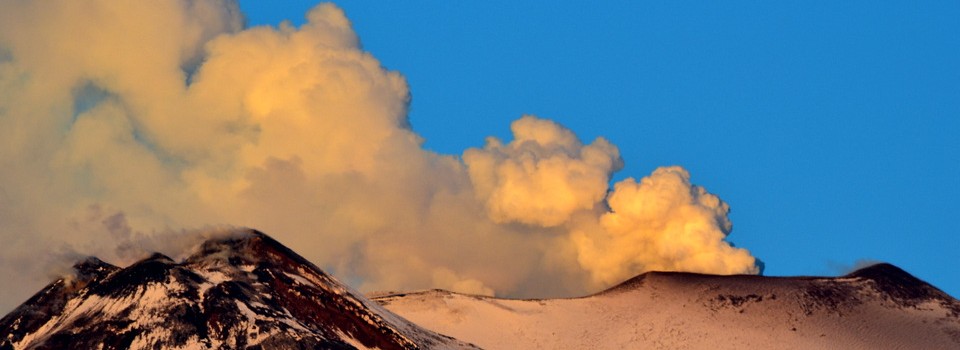
Continua l'attività eruttiva dell'Etna con emissione di cenere marrone grigiastra dal cratere di Nord-Est, che forma un pennacchio diretto verso sud-est (vedi foto a sinistra, di Boris Behncke dell'INGV-Osservatorio Etneo, scattata il mattino del 9 dicembre 2015). Tuttavia queste emissioni non sono associate ad attività stromboliana o fontanamento di lava rilevabile con i sistemi di osservazione visiva e termica. Il materiale piroclastico è trasportato dal vento in direzione della costa Ionica.
Al momento il tasso di occorrenza e la magnitudo degli eventi dello sciame sismico sul versante nord-orientale dell'Etna è in forte diminuzione. Questo sciame si colloca in un quadro dinamico caratterizzato da una sensibile deflazione del vulcano in seguito alla sottrazione di una quantità di magma significativa, ed è da considerarsi una risposta delle strutture tettoniche nel fianco orientale dell?edificio vulcanico.
Eruptive activity is continuing at Etna with emission of grayish-brown ash from the Northeast Crater, which forms a plume trailing southeast (see the photo at left, by Boris Behncke of the INGV-Osservatorio Etneo, taken on the morning of 9 December 2015). These emissions, however, are not associated with any Strobolian activity or lava fountaining revealed by the visual and thermal observation systems. The pyroclastic material is blown by the wind toward the coast of the Ionian Sea.
The frequency and magnitude of events related to the seismic swarm on the northeast flank of Etna is currently diminishing significantly. This earthquake swarm is to be seen in a dynamic context characterized by pronounced deflation of the volcano as a consequence of the subtraction of a significant volume of magma, and represents the response of the tectonic structures in the eastern flank sector of the volcanic edifice.
Fonte: Ingv Catania



 Dall'inizio della giornata le stazioni della Rete Sismica hanno registrato uno sciame sismico nel medio-alto versante nord-orientale dell'Etna. sino alle ore 12:45 locali, sono state registrate 46 scosse sismiche, la maggior parte di queste avvertibili solo a livello strumentale.
Dall'inizio della giornata le stazioni della Rete Sismica hanno registrato uno sciame sismico nel medio-alto versante nord-orientale dell'Etna. sino alle ore 12:45 locali, sono state registrate 46 scosse sismiche, la maggior parte di queste avvertibili solo a livello strumentale.
 After the four paroxysmal eruptive episodes at the Voragine crater of Etna in the past few days, the focus of eruptive activity has shifted, in the early hours of 6 December 2015, to the New Southeast Crater (NSEC), activating the pit crater that had formed around 25 November on the upper east flank of the NSEC cone (see photo at upper left, recorded by the visible monitoring camera EMOV of the INGV-Osservatorio Etneo on the Montagnola).
After the four paroxysmal eruptive episodes at the Voragine crater of Etna in the past few days, the focus of eruptive activity has shifted, in the early hours of 6 December 2015, to the New Southeast Crater (NSEC), activating the pit crater that had formed around 25 November on the upper east flank of the NSEC cone (see photo at upper left, recorded by the visible monitoring camera EMOV of the INGV-Osservatorio Etneo on the Montagnola).